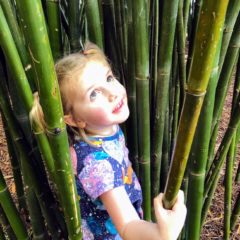Our space unit went really, really well. The kids had a blast, and learned a few things. Initially I assumed that when our enthusiasm for space wound down, we would choose another topic and do the same thing again. But in retrospect, I decided that a few things would need to change for our next ‘school unit’.
First, I felt like I did too much and the kids did too little. The kids were actually quite willing to just sit back and let us tell them what activities we were going to do, especially since the activities were tailored precisely to their needs and interests. It can seem like unschooled kids do a lot less work, but in many ways, they actually do a lot more. It’s a lot harder to come up with interesting play and learning ideas yourself than it is to let someone else do that creative work for you. When the choices of how to spend your time are entirely up to you, it’s hard to find someone to blame when you arrive at the end of the day and realize you’re unhappy with what you’ve accomplished.
Basically, I realized there was an imbalance between producing and consuming. I was producing content, and presenting it to the kids for their consumption. Now, I have no problem with this dynamic when I truly feel that it’s important for their growth and development. After all, I prepare food for children every single day, and I’m happy to do it. But it wasn’t important or necessary for me to formally teach them about space, or any other academic topic. That became more and more obvious as the unit progressed. They’d already learned pretty much everything an age-appropriate unit on the solar system would have taught them, entirely on their own. Unschooling is working. Why would I formally teach them stuff?
But we can’t just halt all structured activities. The reasons we began doing them in the first place haven’t changed. They need regular novel input to drive their play. Otherwise they eventually start getting those needs met through manipulation and conflict. I need to provide something.
So, we’ve kept some elements of our school days, but dropped the pre-prep. We still have ‘circle time’ and read stories together, everything from board books to beginner chapter books. We still bring out an inquisitive puppet who wants to learn stuff from the kids. But, instead of exploring a specific topic and doing a bunch of related activities, we’re focusing on one material at a time. We decided to start very simple. We’re doing a unit on paper.
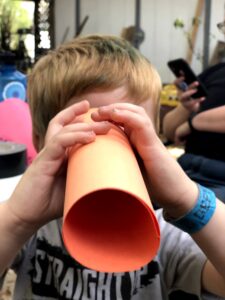
First, we had a conversation about paper. What is it? Where does it come from? What do we do with it? Once again, the kids educated a puppet, this time “Perry the Pig” and proved to me that they already know plenty, and definitely don’t need formal lessons. For the activity, we simply provided them with paper and challenged them to figure out what they could do with it. Instead of directing the activity, we sat down with them and joined them in creative exploration.
The first day, we explored with just paper.
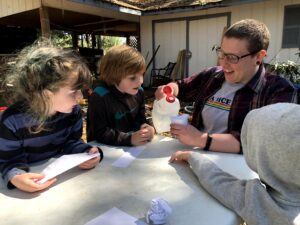
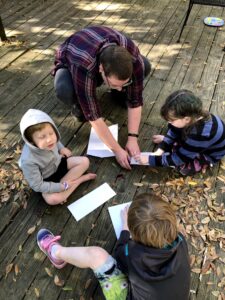
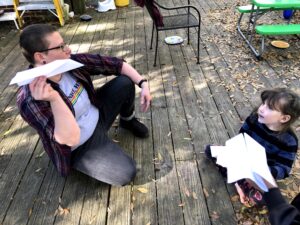
The next day, we added scissors and hole punchers.
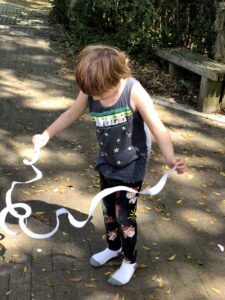
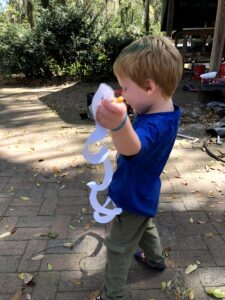
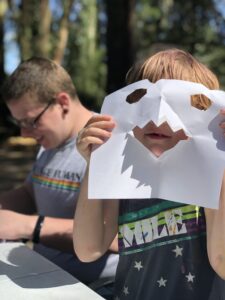
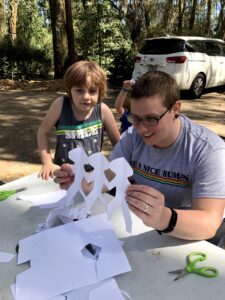
The 3rd day, we added glue and tape to the available tools.
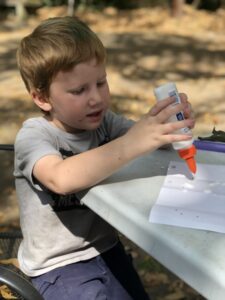
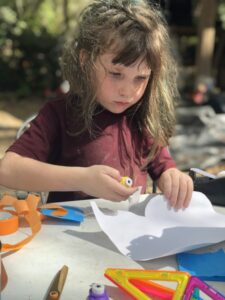

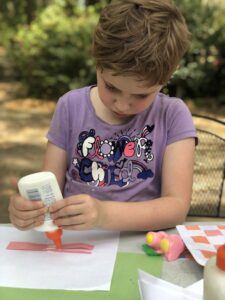
The 4th day, we added a stapler and pencils.
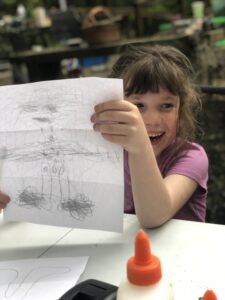
Going forward, we plan to add other mark-making implements like crayons or colored pencils, explore with paint, and try using different types of paper, large and small. Eventually, we plan to collect up all of our paper scraps from all of our paper explorations, shred them, and make them into new paper. Give the kids a hands-on taste of recycling. So far, this is meeting their needs just as well as the science unit did. My planning time has been reduced to nearly zero, they’re playing together better than ever, and putting their imaginations and creative energy to work. No doubt we’ll continue to modify things as we go. After all, we’re learning too.
